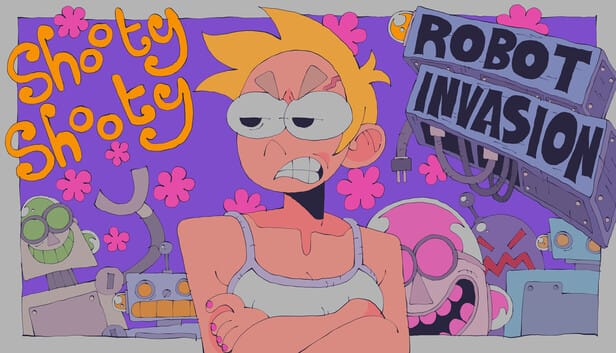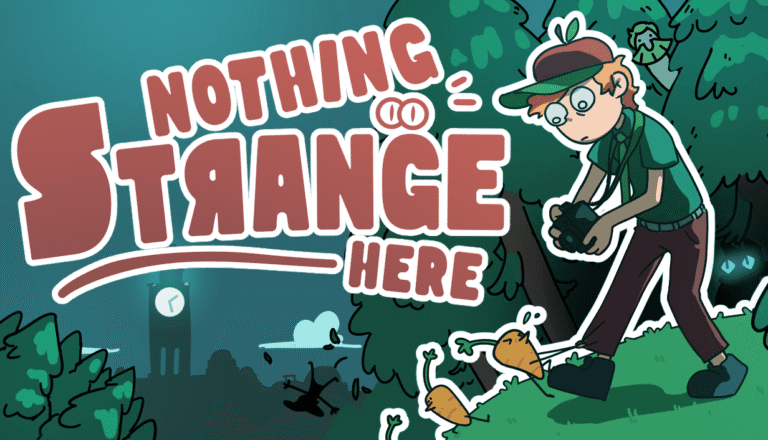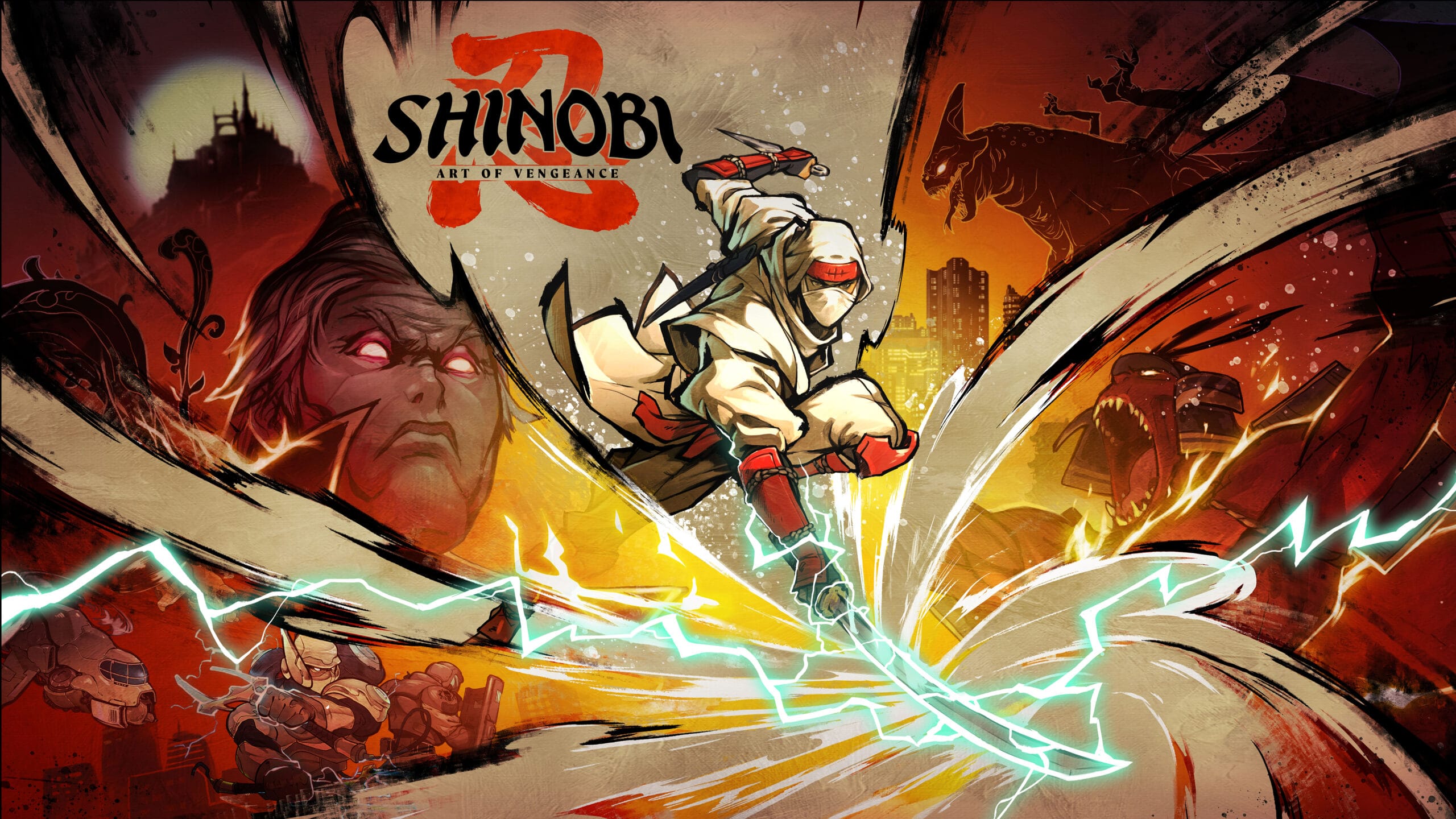
Shinobi: Art of Vengeance begins with a single, arresting image: Oboro Village is burning, its paper-lantern glow swallowed by pillars of smoke, and Joe Musashi – once content to train students in quiet seclusion – steps forward, katana unsheathed, ready to carve a path through the flames. ENE Corp’s raid is swift, merciless, and thin on motive: the syndicate wants ninja souls to fuel a world-spanning weapons network, and Musashi’s clan provides the richest vein. Those are the only facts the game bothers to state outright. Everything else – grief, rage, duty – arrives through action: a sideways leap across a collapsing roof, the hiss of steel meeting armour, the soft thud of kunai as they find their mark. Within minutes, story and mechanics fuse; the controller becomes the ink brush that will complete Musashi’s new legend.
The Feel of the Blade
Combat thrives on restraint. Three buttons – light slash, heavy slash, and kunai throw – form the entire surface grammar, but every encounter rewrites its poetry. The key is flow rather than memorisation. Light attacks stitch into heavy strikes; a kunai interrupts to stagger a shield bearer; a cancel dash keeps the chain alive. Offence is rewarded by a blue Ninpo gauge that fuels elemental specials such as Dragon Breath or Lightning Strike; judicious risk, by contrast, fills a separate rage meter, sparking devastating, screen-wide Ninjutsu that can also serve as a burst-heal when activated at the edge of defeat.
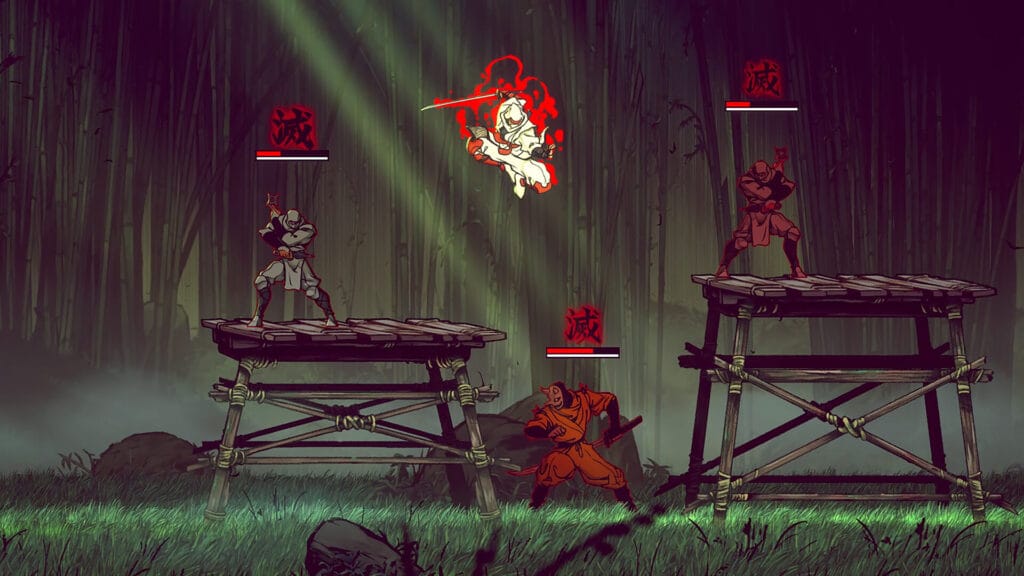
Underpinning it all is the Shinobi Execution system: stagger an enemy until a crimson outline flickers, tap the finisher, and Musashi blurs through space, erasing every marked target in a single flourish. When multiple foes share that perilous outline the execution becomes a deadly dance, each teleport preserving momentum and turning the battlefield into a kinetic ink wash of motion. The mechanic is not merely spectacle. It refunds health and currency, encouraging players to juggle enemies instead of dispatching them one by one, and thus keeps risk balanced against reward.
Musashi’s move set is as wide as a summer river, yet its depth runs further. Almost every attack animation can be jump-, dash-, or wall-cancelled, allowing advanced players to sketch their own aerial calligraphy: launch a spear-wielding yokai, juggle it toward a platform edge, dash-cancel into a wall run, then dive-kick back into the fray before gravity remembers its job. Nothing in the skill tree is strictly linear. Elemental Ninpo can be re-slotted between checkpoints; amulets tweak everything from combo timing to fire-ball radius, turning load-outs into micro builds that suit individual pacing or level-specific hazards.
Stages that Unfold Like Scrolls
Art of Vengeance stretches across fourteen principal stages, each a self-contained tableau that feels hand-painted for discovery. Early excursions are sprints: a moonlit rice field where scarecrows double as stealth-attack anchors, a fish-market pier slick with rain and neon spillage. Later, the design coils inward. One labyrinthine shipyard loops back on itself, its cargo cranes turning into shortcuts once Musashi acquires the Cannon Punch to shatter reinforced doors. A mid-campaign desert sinks into partially buried temples; sandstorms momentarily erase platforms, forcing players to advance by sound and memory. The audacity peaks in the infamous train level: boxcars stitch together a horizontal gauntlet while thunderheads crack overhead, momentarily lighting enemy silhouettes that would otherwise blend into the charcoal palette. It is environmental storytelling conducted through hazard placement rather than voiced lore.
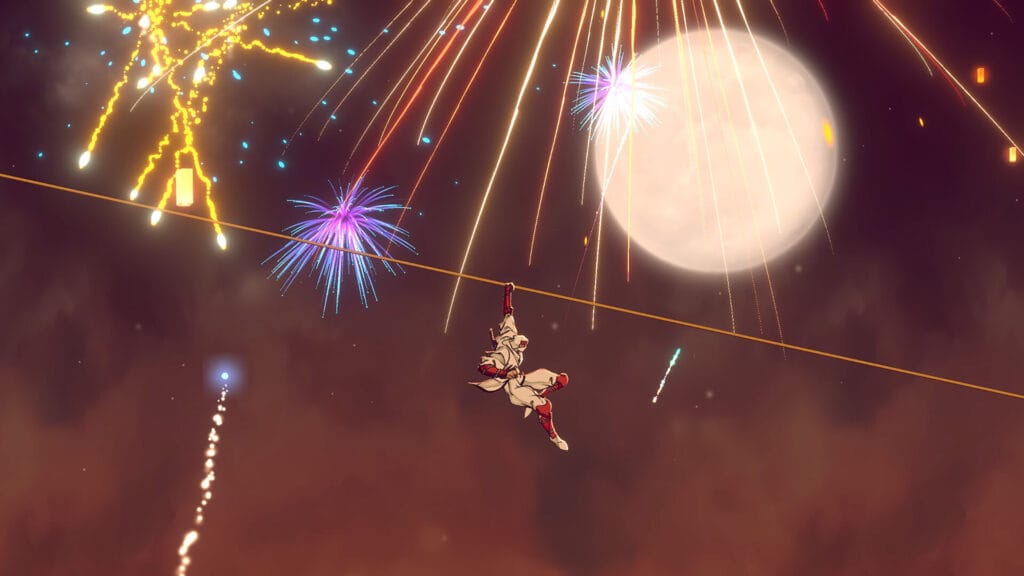
Roughly halfway through, wall claws and a paper-kite glider revolutionise traversal. Previously unreachable alcoves reveal clan seals – collectibles that purchase new sword techniques and Ninpo slots – while alternative exits feed into short, challenge-rich detours. Some hinge on puzzle logic, like redirecting steam vents to power ancient machinery; others are brief arena trials wherein mixed enemy squads push the combo system to its limit. Nothing you leave behind is locked forever: stage select opens as soon as you clear a chapter gate, and checkpoint statues let you spawn directly at missed secrets, keeping back-tracking lean rather than laborious.
Skirting the main path are ten Ankou Rifts, optional chambers that strip away save points in exchange for singular tests of dexterity. One is a vertical shaft laced with rotating blade columns; another is a colour-coded platform sequence whose tiles vanish in syncopated rhythm. Clearing a rift grants modifiers – larger parry windows, additional execution range – and ultimately pieces of the Dark Katana, Musashi’s pride-testing ultimate weapon. The rifts are never mandatory, yet their siren song of mastery is hard to ignore.
Enemies, Bosses, and the Language of Threat
Normal mobs announce intentions through bold silhouettes and distinct palettes: red bars signal fodder, yellow armour denotes stagger resistance, and a rising white overlay charts stun build-up. But the game’s true punctuation marks are its bosses – twelve, none recycled.
- The Gemini Abomination fuses two mutant samurai into one shifting hurt-box; every health-bar phase swap realigns both hit maps and tells.
- Beastmaster Kurogashi weaponises the environment, splintering a wooden rope bridge plank by plank while hurling gryphons in overlapping dive arcs.
- Lord Ruse himself commands bullet-sigil geometry; survival demands dashing through negative space that reconfigures with choir-like crescendos.
What unites these encounters is clarity. Telegraphs are dramatic yet fair, inviting study instead of guesswork. Each duel plants one new combat lesson – reflection projectiles, vertical tracking slashes, armour break windows – and then tests that lesson in the wild during subsequent enemy waves. In this way bosses serve not just as climaxes but as curriculum milestones.
Art as Combat Partner
Screenshots alone do not capture the game’s true splendour. Lizardcube’s artists layer traditional ukiyo-e strokes atop European bande-dessinée line work: clouds swirl in sharp S-curves; neon kanji bleed into the night like phosphor; blood sprays land not as gore but as dark vermilion ribbons that evaporate mid-air. Animation antic is generous – elbows exaggerate, knees twist, garments snap – making hit-confirm windows feel intuitive. Even the UI obeys the aesthetic: meters resemble lacquer inlay, combo numbers materialise like brush characters, vanish like smoke.
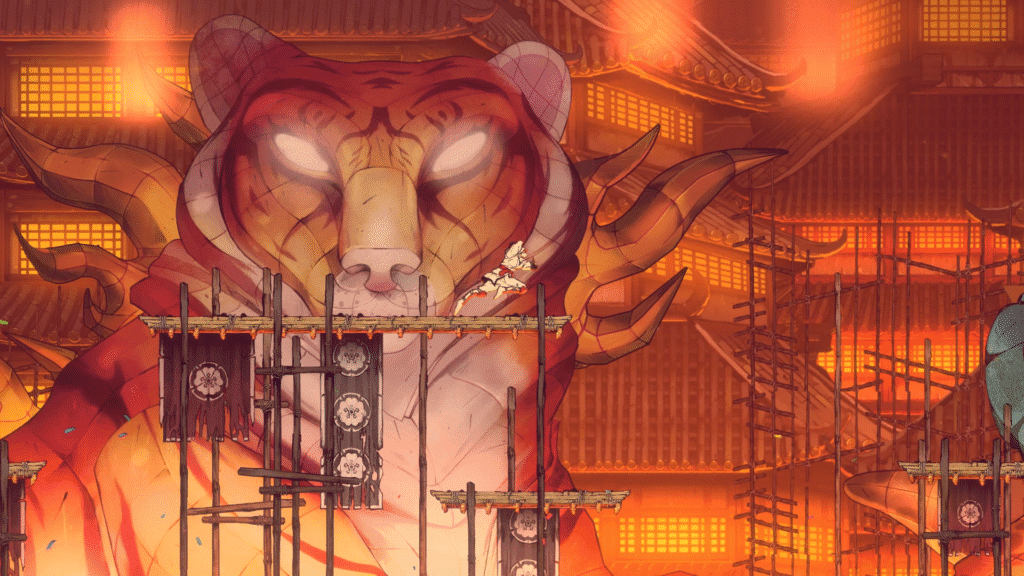
Musically, the score marries fret-burning shamisen leads with synthwave bass loops, alternating minor pentatonic riffs with modern drum programming. Percussive accents frequently synchronise with parry clangs, reinforcing rhythm as mechanical feedback rather than mere ambience. Late-level compositions double down on fusion, dropping taiko patterns beneath electric-guitar bends to reflect Musashi’s own hybrid combat style – ancient discipline meeting improvised fury.
Difficulty, Accessibility, and the Fine Edge of Frustration
Normal mode respects newcomers without sedating veterans. Generous checkpoints defuse early setbacks, and assist sliders can soften enemy damage or lengthen invincibility frames for those who need a gentler curve. Hard mode, unlocked from the outset, does more than juggle numerical multipliers: projectile paths accelerate, armour values adjust, and boss behaviours expand with fresh strings, forcing new spacing strategies.
Where criticism is warranted, it lies in narrow pockets of platforming precision. Wall claws occasionally misread lateral jumps, especially during rift challenges that demand flawless rhythm, and a handful of spike sequences punish micro-misalignments that feel slightly discordant with the combat’s buttery responsiveness. These moments are minor, but their sting is amplified because the surrounding systems are tuned so tightly.
Visibility, too, can falter. On a large monitor the painterly particle storms look spectacular; on a handheld they can obscure Musashi amid late-game Ninpo explosions, briefly turning elegance into guesswork. Such lapses are infrequent yet memorable.
Longevity Without Padding
A focused player can reach the credits in eight hours; fuller exploration stretches to twelve or more. The brisk runtime disguises a deceptively sturdy replay loop. Arcade mode strips out stage select, glider shortcuts, and item stores, challenging you to clear the entire storyline on one life stock. Boss Rush is exactly that: twelve fights, escalating modifiers, global timers saved to an in-game leaderboard. Both modes hook directly into the combo-lab mindset, letting veterans chase style rankings while newly minted ninjas refine parry timing under laboratory conditions.
Collectibles earn tangible upgrades rather than trophy-room clutter. Additional Ninpo slots transform load-out experimentation into a reward cycle: one hidden seal might unlock a ricocheting kunai, another a water-shield parry that ripostes with area knock-back. Every discovery shifts enemy match-ups in subtle ways and encourages fresh stage routes.
A Legacy Renewed
Art of Vengeance walks a tightrope between reverence and reinvention. Sprites become high-resolution ink paintings; the minimalist three-button layout conceals cancel routes worthy of genre grandmasters; linear level bones support a circulatory system of hidden arteries. At no point does the game feel embalmed by nostalgia. Instead, it treats Shinobi’s arcade DNA as a living genome – something to splice, cultivate, and watch bloom.
In an era crowded with retro-leaning indies, Lizardcube avoids pastiche by wielding restraint as artistry. It does not parody the eight-bit past, nor does it slavishly attempt to recreate it. It identifies what made the 1987 original compelling – speed, clarity, momentum – and re-expresses those qualities through modern craftsmanship: hand-drawn frames at buttery refresh, animation-cancellable attacks, reactive soundtrack layering.
Every weapon, every input, every environmental beat serves one purpose: to let the player feel like a ninja operating at the outer boundary of human precision. The game succeeds because it never compromises that fantasy for spectacle alone. Spectacle emerges naturally the moment mastery clicks into place.
Final Appraisal
When Oboro Village’s embers finally cool and the credits roll, Shinobi: Art of Vengeance leaves one lingering impulse: again, but cleaner. Not because the tale’s revenge arc demands re-reading – it says what it needs in sparse, effective strokes – but because the mechanics sing loud enough to drown the call of whatever else waits in your backlog. You replay for the glide-cancel you botched on the desert ridge, for the Execution chain you know can extend by one more body, for the rift whose buzz-saws marked you fifty times but never truly claimed victory.
Masterpiece is a word best used sparingly, yet the shoe fits here – slightly scuffed by finicky platform grabs, perhaps, and by the occasional veil of particle noise, but still gleaming, still lethal. In the grand lineage of action-platformers, Shinobi once again stands where it belonged all along: blade unsheathed, edge catching the light just so.
Rating: 4.9 / 5
This review of Shinobi : Art of Vengeance is based on the PC version, with a code provided by the game’s publisher.

